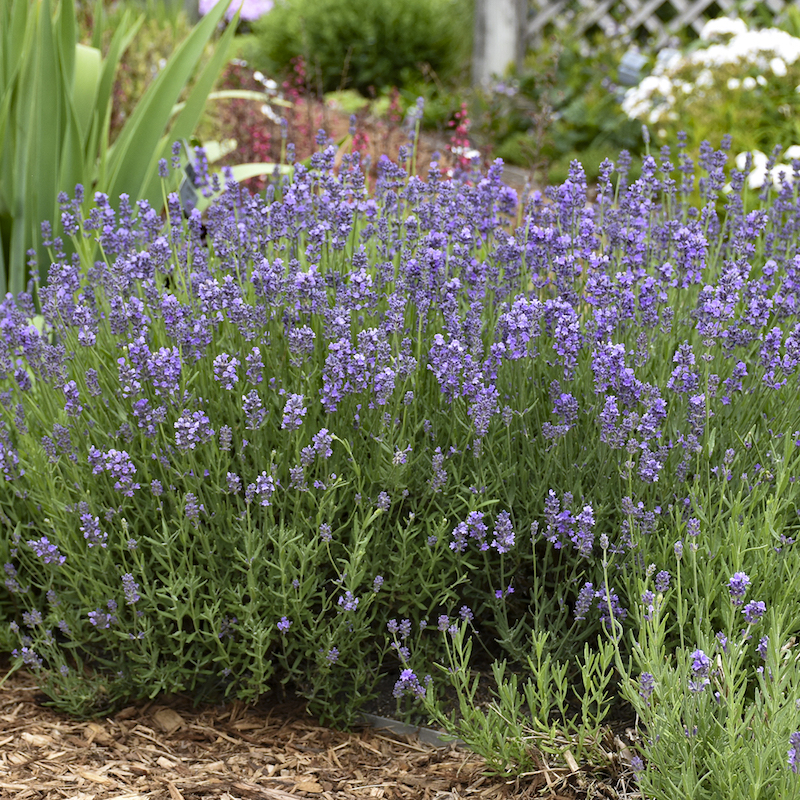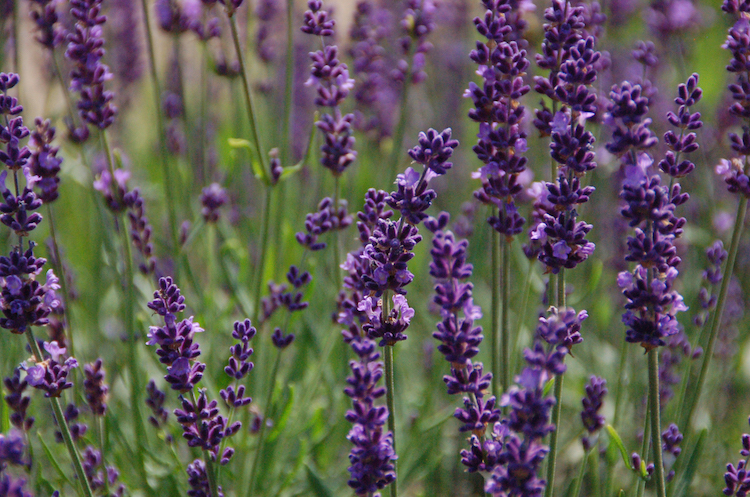
‘Munstead’ English lavender was highly rated in Chicago Botanic Garden evaluations. Photo courtesy PerennialResource.com
Lavender, an Old World plant, has had a place in gardens for thousands of years. During the Roman Empire, this native to the Mediterranean region, was used to scent bath water. The name comes from the Latin lavare, which means to wash or bathe.
Even today, lavender (Lavandula spp.) is used to scent bath water, candles, sachet and potpourri, and to flavor ice cream, shortbread cookies, biscuits and lemonade.
Although most gardeners love this woody perennial, it suffers from the reputation of being difficult to grow in the Midwest, which is a markedly different environment than the plant’s arid, rocky, native ranges. Most lavenders are rated hardy to minus 10 degrees, which covers most of central Indiana. The greatest threat to its survival here is our heavy clay soil that tends to stay wet in winter. Coming to our rescue is the renowned plant evaluation program at Chicago Botanic Garden, which has looked at lavenders and makes recommendations.
Six-year evaluation
Like all of its plant evaluations, there was no doting on the dozens of cultivars and species being tested. They were watered as needed, but not treated for insects or diseases. Plants that didn’t survive the first of the six-year study were not replanted.
“Final performance ratings are based on winter hardiness, flower production, foliage and habit quality and plant health and vigor,” wrote Richard G. Hawke, plant evaluation manager and associate scientist at the botanic garden. Seven varieties received the highest rating for “exceptional flower production, healthy foliage, vigorous habits, adaptability to the growing condition and superior winter hardiness.”
Six of the seven are English lavenders (L. angustifolia). Six have blue to purple flowers. All seven rated four and one-half stars out of five. I’ve grown three of them.
Readily available ‘Munstead’ ranks high
The English lavender ‘Munstead’ has been around for years, is readily available and very reliable here in Indiana. I’ve grown it for decades. The evaluation found it to be more cold hardy than ‘Hidcote’, another popular, readily available variety.
‘Jean Davis’, a pale-pink English lavender, was a standout among others with that flower color. I had one of these plants for 12 years.

Phenomenal lavender rates well in CBG evaluations. Photo courtesy Peace Tree Farms
Phenomenal (L. x intermedia ‘Niko’) is a newer French lavender hybrid. French lavenders, in general, are deemed less winter hardy. However, Phenomenal “performed significantly better than other (French lavender) cultivars and was comparable to an English lavender,” Hawke wrote. My personal experience with this lavender is not so favorable. It has incredible flower power, but I’ve planted it three times and it fails to survive more than a year or two.
‘Sharon Roberts’, SuperBlue’, ‘Imperial Gem’ and ‘Royal Velvet’ are also English lavenders that made the recommended list. I have not seen these in area garden centers, but they might be worth searching for.
For more details, download CBG’s Lavenders for Northern Gardens.